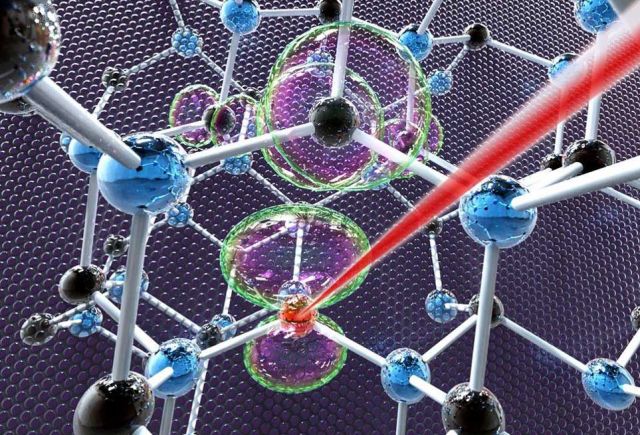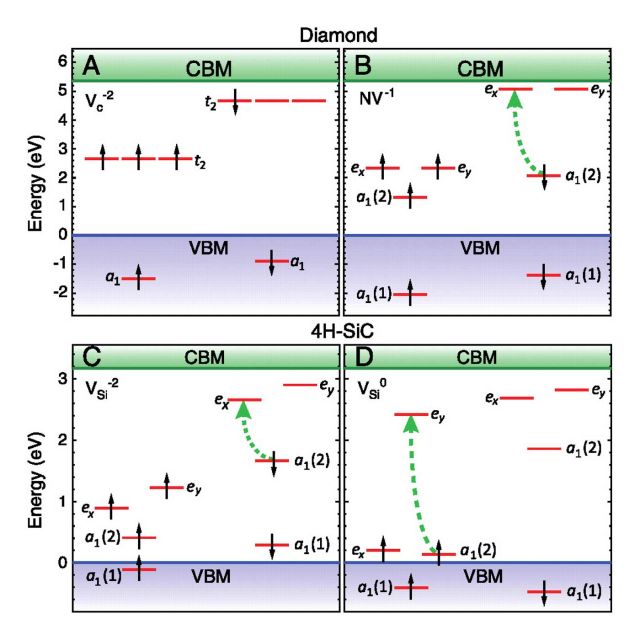Defects for Quantum Information Science
Identifying and designing physical systems for use as qubits, the basic units of quantum information, are critical steps in the development of a quantum computer. Among the possibilities in the solid state, a defect in diamond known as the nitrogen-vacancy (NV) center stands out for its robustness because its quantum state can be initialized, manipulated, and measured with high fidelity at room temperature. We have studied analogous defects in other materials as a way to develop a systematic approach to identify deep center defects with similar properties to the NV center. Currently, we are using this approach to analyze the properties of defects, their hosts, and their impact on quantities important for quantum computing, which includes spin-state lifetime, defect stability, and internal optical transitions.
Searching for new quantum defects
Point defects embedded in a semiconductor crystal are ideal quantum systems. These “quantum defects" are held fixed in the lattice (no need for ion traps), provide multiple quantum states comprised of atomic-like orbitals, and can be coherently controlled at room temperature. Among the possibilities in the solid state, a quantum defect in diamond known as the nitrogen-vacancy (NV) center stands out for its robustness; experiments have demonstrated the ability to initialize, manipulate, and measure its quantum state with high fidelity at room temperature. However, the NV center has several key drawbacks, including low quantum efficiency and decoherence from various sources in diamond. Research efforts have now turned to identifying alternative quantum defects. In our group, we employ computational techniques to identify the microscopic origin of quantum defects observed in experiment and to propose new candidate defects in technologically relevant semiconductors [1]. We also develop the first-principles methodologies necessary to characterize these quantum defects. A recent review [2] summarizes some of the techniques utilized in our group to study quantum defects.
Quantum defects in two-dimensional materials
When one creates a surface in a three-dimensional material, the periodic structure is interrupted, leaving broken bonds on the surface. These so-called dangling bonds are a major source of decoherence for quantum defects, which need to be placed near the surface for sensing applications or to maximize interactions with light. Van-der-Waals-bonded, layered materials are an attractive system to host quantum defects as their surfaces are naturally free from sources of decoherence. Hexagonal boron nitride (h-BN) has recently been observed to host single-photon emission at 2 eV and 4.1 eV originating from quantum defects, but the microscopic origin of these emitters had proven elusive. Using first-principles computational techniques, we identified boron dangling bonds as the 2 eV [1] and carbon dimers (CBCN) as the 4.1 eV [2] single-photon emitters in h-BN. Ongoing research efforts will further characterize these defects and will examine other two-dimensional materials, such as the transition-metal dichalcogenides, which are known to host single-photon emitters.


